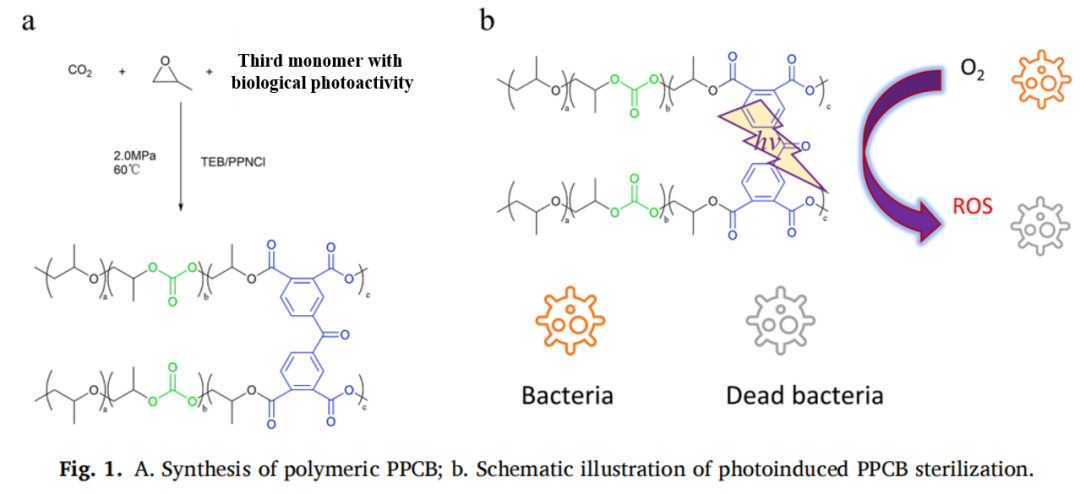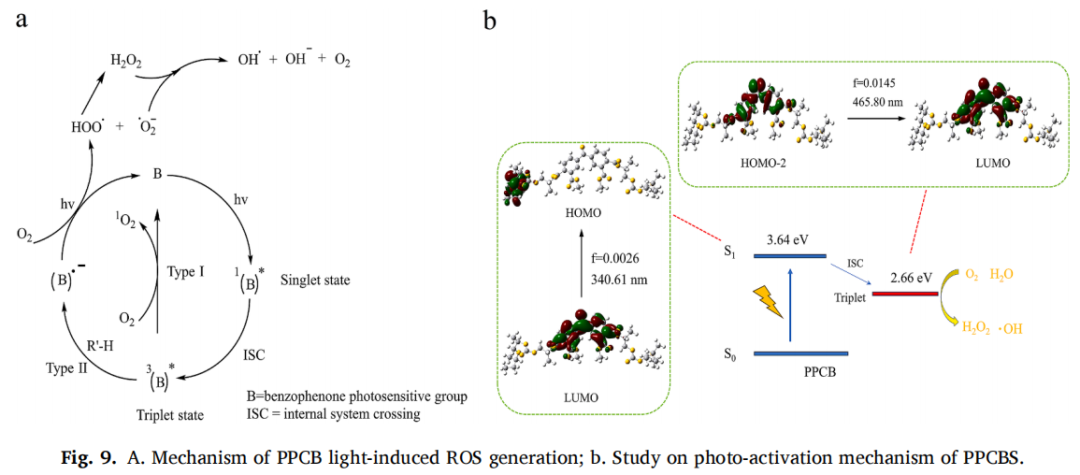Recently, Professor Wang Wenzhen’s team from the School of Chemistry and Chemical Engineering of Xi’an Petroleum University has made new progress in the green development of carbon dioxide-based polycarbonate materials and developed a series of efficient and low-cost new catalysts for the efficient conversion of carbon dioxide. , and successfully synthesized new carbon dioxide-based polycarbonate materials. Relevant research results were published in Chemical
Engineering Journal.

The synthesis route of CO2-based PPC with high antibacterial properties and the schematic diagram of the antibacterial mechanism
In the past two years, the team has developed a series of efficient and low-cost new catalysts for the efficient conversion of carbon dioxide and systematically explored the competition and synergy mechanisms of the PPC catalytic reaction system to achieve efficient and controllable synthesis of polymers. In addition, “structure determines properties”, the team used careful structural design to prepare polycarbonate polymer materials that meet various needs. By introducing a third monomer into the PPC main chain skeleton, the team successfully synthesized a new type of strong polymer material. CO2-based polycarbonate material with flame retardant properties.
In order to comprehensively improve the high UV transmittance of traditional PPC materials and the presence of carbonyl groups in their chain segments, they are prone to rapid aging and degradation under UV irradiation, resulting in natural defects such as short material life. Professor Wang Wenzhen’s team from the School of Chemistry and Chemical Engineering of Xi’an Petroleum University took the idea of ternary copolymerization modified PPC and introduced the biophotoactive third monomer into the alternating copolymerization reaction of CO2 and epoxide to chemically conduct CO2-based polycarbonate. modified. Modified CO2-based polycarbonate (PPCB) has strong resistance to ultraviolet aging. Under ultraviolet irradiation, it can generate reactive oxygen species that can act on pathogens through electronic transition, prompting the pathogens to produce oxidative stress, leading to their inactivation. or die, thus imparting antibacterial properties to the material. The polymer material showed extremely low cytotoxicity to mouse fibroblast L929 cells in the concentration range of 0-50 μM, indicating that PPCB has good cytocompatibility and a high concentration safety threshold. This research work can effectively prevent pathogens from spreading infections and reduce dependence on antibiotics, showing hope for the transition to a sustainable and circular carbon economy and great application potential to combat the growing threat of viral infections and protect public health. This work is also the first time that degradable CO2-based PPC materials have been used in the fields of efficient antibacterial, anti-ultraviolet, and anti-aging research, expanding the application scope of CO2-based polycarbonate polymer materials. This work is one of the latest developments in the team’s recent research on the precise design and controllable synthesis of carbon dioxide-based polycarbonate.

Study on antibacterial mechanism


